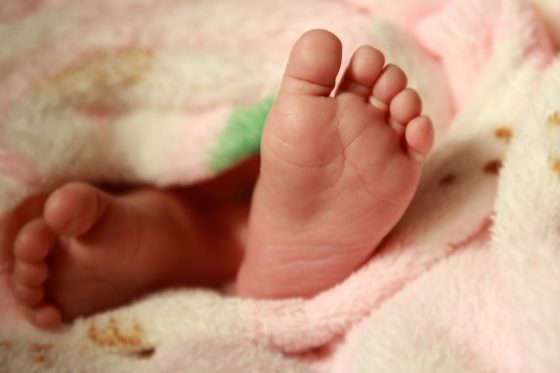Is Dystonia Disorder Cerebral Palsy?

Dystonia in children with cerebral palsy results from abnormal impulses from the section of the brain called the basal ganglia. These nerve activations may cause opposing muscle groups in the face, hands, feet, arms, or legs to contract, resulting in postural issues and abnormal movements.
But what is dystonia disorder? Is it separate from cerebral palsy? If my child has dystonia disorder, does she also have cerebral palsy? This post will investigate the differences between the two and how you can get your child help if her condition was caused by a birth injury.
Contents
What is dystonia disorder?
Dystonia may be:
- full body (general dystonia)
- localized to one part of the body (focal dystonia); common forms of focal dystonia are cervical (neck), blepharospasm (eyes), cranio-facial (jaw, lips and tongue), spasmodic or laryngeal (vocal cords), or task-specific (such as writer’s cramp)
- occurring in two or more unrelated body parts (multifocal dystonia)
- occurring in two or more adjacent body parts (segmental dystonia)
- occurring on only one side of the body (hemidystonia)
While most cases of dystonia have no known cause, it can sometimes be genetic. These are often referred to as primary dystonias. Secondary dystonias are caused by brain injury or metabolic issues. Dystonic cerebral palsy falls into this second category.
See also: The Cost of Cerebral Palsy
How is dystonia disorder different from CP?
Some symptoms of CP overlap with those of dystonia. Symptoms of dystonia include:
- restlessness
- repetitive movement
- twisting movement or abnormal postures
- abrupt or jerky movement
- slow movement
- difficulty sitting, walking or remaining upright
- grimacing or drooling when facial muscles are involved
- difficulty breathing, eating or drinking when facial muscles are involved
- rapid or uncontrollable blinking
- difficulty speaking
- pain with movement
- an increase in symptoms when tired, excited or stressed
These involuntary movements typically relax after seconds or minutes and they seem to lessen with relaxation, sleep or diversion. Dystonia typically does not cause cognitive disability.
Not all forms of cerebral palsy are dystonic, and not all dystonias are cerebral palsy. Disorders related to CP typically begin before age 3. Dystonia may begin in early childhood or onset may happen in adulthood. Early onset dystonia may start in the arms and legs and progress to other parts of the body. These irregularities in movement typically start off intermittent and tend to occur only during movement, but become more widespread and may begin to happen even at rest over time.
How can I treat my child?
Because no single treatment is effective for all children with dystonic CP, your child’s healthcare provider may recommend a combination of interventions. Because CP and dystonia cannot be cured, healthcare providers seek to maximize comfort and improve independence and quality of life for children with dystonia. The American Academy for Cerebral Palsy and Developmental Medicine (AACPDM) has a flowchart that can help parents and caregivers decide one treatment plan.
Treatments will depend on your child’s symptoms, and may include the following.
Stress Management
Learning these techniques can help in-the-moment when spasms are occurring, since they tend to lessen with relaxation. Psychotherapy for the family may also be helpful if the condition is severe.
Physical, Occupational or Speech Therapy
These interventions are intended to enhance motor control, optimize stability and aid in communication. Because dystonia of the face, jaw, neck, or throat can cause swallowing or feeding problems, it can sometimes be difficult for these children to get enough nutrition for proper growth and development (especially for an infant). Occupational therapy may help, as will working with a board-certified lactation consultant for breastfeeding mother baby pairs.
See also: The Best Speech Therapy for Cerebral Palsy
Medications
Oral medications may be used to relieve muscle contractions and pain. Most medications work on neurotransmitters, and the class of medication will depend on the specific symptoms needing treatment. For instance, anticholinergic agents block acetylcholine, which will inhibit certain nerve impulses. Baclofen, benzodiazepines, clonidine, and dopaminergic are other drugs that are sometimes used. If oral medication is ineffective, your child’s healthcare provider may suggest an implanted pump that delivers a steady dose of medication to the nervous system (called intrathecal baclofen treatment).
Botulinum Toxin
Injections of small amounts of botulinum toxin into affected muscles are sometimes used to treat focal dystonias. This chemical prevents muscle contractions providing temporary improvement of dystonia.
Deep Brain Stimulation (DBS)
This promising treatment option requires implantation of electrodes into the deep nuclei of the brain to deliver continuous electric stimulation that will block the signals causing dystonic symptoms. This therapy can be considered when medication are ineffective or have too many side effects. Technological advances make possible DBS for younger children (3 to 4 years of age).
Surgery
Sometimes procedures are undertaken to purposely damage small areas of the brain or spinal cord in an effort to impede nerve impulses and relieve dystonia symptoms.
See also: Surgery and Cerebral Palsy: What You Need to Know
Long-Term: Outlook and Research
The most effective therapy will be one that is individualized for your child and typically includes a team of providers including pediatricians, physical or occupational therapists, speech and language pathologists, dietitians, and more. These providers may reassess progress and make changes in treatments as your child grows or if symptoms change.
Early treatment seems to make a huge difference for children with dystonic cerebral palsy. Understanding of dystonia in children is limited, and the current research often focuses on adults. Researchers continue to investigate dystonia as it relates to CP in the hopes of improving quality of life for these individuals.
If your child’s dystonia or cerebral palsy was due to the mistake of your medical team, you have legal options. Contact Safe Birth Project to see how we can help.
See also:








Leave a Reply
Want to join the discussion?Feel free to contribute!